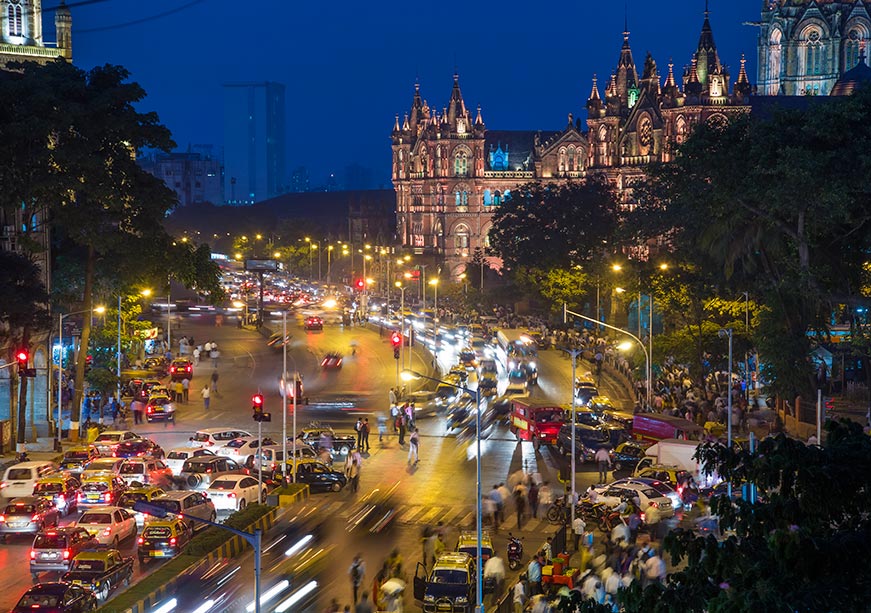-
CENTRES
Progammes & Centres
Location
Transit hubs across Indian cities need to have better physical integration at interchanges to facilitate smooth and efficient mobility

Image Source: Getty
In response to rapid urbanisation and increasing congestion, several Indian cities have invested in metro rail networks to provide sustainable and affordable mass transit solutions capable of handling high passenger volumes. Despite these efforts, many metro systems have fallen short of their projected ridership targets. This shortfall can largely be attributed to the lack of integration across public transport systems, resulting in unsustainable urban transport networks.
Public transport systems introduced after the National Urban Transport Policy (NUTP) have failed to establish an integrated multimodal network. This highlights the urgent need to develop an Integrated Sustainable Multimodal Transport System (ISMTS) in Indian cities to promote safety, accessibility, affordability, comfort, convenience, and sustainability.
An ISTMS depends on achieving five key forms of integration: physical, operational, informational, fare, and institutional. Among these, the creation of shared physical infrastructure across existing transport modes is crucial in enhancing passenger comfort, convenience, and ease of transfer.
In response to rapid urbanisation and increasing congestion, several Indian cities have invested in metro rail networks to provide sustainable and affordable mass transit solutions capable of handling high passenger volumes.
The physical integration of multiple transport modes typically occurs at interchanges—key points where different modes of transportation converge, allowing passengers to transition between them. Interchanges can be categorised into various levels based on their geographical importance, the number of transport systems converging at the location, and the level difference between the various stations of the transport system. The easiest classification of interchanges is as follows:
Each level of interchange plays a crucial role in ensuring the efficiency and convenience of multimodal transport systems.
The physical integration of public transit stations seeks to consolidate various components of a transportation network and promote the shared use of facilities and infrastructure, providing users with seamless mobility. The design of integrated infrastructure varies according to the level of interchange, necessitating different types of facilities. However, multimodal transport hubs in particular, require several critical elements to ensure efficient, accessible, and user-friendly ISMTSs in Indian cities.
Seamless movement between and across different transit stations and stops requires well-designed, accessible infrastructure such as foot overbridges, elevators, escalators, and ramps.
A 2016 World Resources Institute (WRI) survey revealed that 70 percent of potential users of the Bangalore Metro refrained from using the service due to inadequate first- and last-mile connectivity at the transit stations. This challenge is not unique to Bangalore; rather, reflects a broader issue in Indian cities.
A more recent survey from the Ola Mobility Institute, which assessed the quality of public transport systems across India using a five-point Likert scale, highlights persistent user dissatisfaction. It indicated several concerns regarding safety at transit stops, accessibility for persons with disabilities, and the availability of public transport across all urban areas. Safety at transit stops received an average score of 2.7 out of 5, underscoring the need for improved security measures. Accessibility for persons with disabilities scored 2.6, revealing a significant gap in inclusive infrastructure. The availability of public transport across cities garnered a score of 2.9, reflecting limited coverage and frequency. Regarding the availability of information on public transport services, cities scored a modest 3.1, indicating a need for better real-time data and user-friendly interfaces to enhance transit accessibility.
The study conducted at CEPT (Centre for Environmental Planning and Technology) University titled “Assessment Framework for Physical Integration” found that, while the New Delhi Railway Station multimodal hub features regional railway, metro, and bus services within a 300-metre radius, it lacks adequate non-motorised transport (NMT) infrastructure to facilitate smooth movement between these services. Despite handling over 500,000 passengers daily, the station has limited escalators, exacerbating passenger inconvenience. Ahmedabad's railway station displays comparable deficiencies. The nearest metro station is located 800 metres away, but there are no designated pedestrian pathways between the two, and inadequate lighting at night makes the journey unsafe.
This pattern is seen across many Indian multimodal hubs, where the station area planning often neglects essential integrated infrastructure. As a result, commuter transfers become difficult, leading to disorganised and inefficient transit hubs.
In recent years, several cities have taken initiatives to enhance the physical integration of transit stations and stops. Notable efforts include the Station Access and Mobility Program (STAMP) by the World Resources Institute (WRI), local area planning under the Smart Cities Mission’s area-based development component, and the Streets for People Challenge led by the Institute for Transportation and Development Policy (ITDP). These programmes aim to improve access, connectivity, and overall mobility around transit hubs, fostering seamless multimodal integration in urban areas.
The primary challenge hindering effective physical integration in Indian cities is the fragmented nature of transport planning and governance. Most urban transport agencies primarily serve as implementing bodies, with few, if any, specialising in integrated planning, policy formulation, or system-wide coordination. The lack of a dedicated authority for comprehensive, multimodal transport planning leads to a disconnect between how different modes of transport are developed.
Most urban transport agencies primarily serve as implementing bodies, with few, if any, specialising in integrated planning, policy formulation, or system-wide coordination.
For instance, metro authorities typically design plans focused on their corridors, bus agencies plan independently for their routes, and rapid rail agencies do the same for their systems. Conflicts and overlaps often arise when these independently conceived plans are merged into a city-wide transport strategy. These issues stem from unclear roles and responsibilities across agencies, leading to coordination failures and inefficiencies. Ultimately, the responsibility for integrating various modes of transport at interchange points remains unclear. Cities need to have an empowered overarching body like the Unified Metropolitan Transportation Authority (UMTA), which is tasked with the effective planning and implementation of physical integration at transit stops.
Physically integrated infrastructure also demands comprehensive planning across macro, meso, and micro levels of transit services within cities. At the macro level, planning should ensure that transit interchanges are strategically located at critical nodes, enabling passengers’ seamless mobility across the urban landscape. Meso-level planning must focus on placing the transit stations of newly introduced modes within a 500-metre radius of existing transit hubs to facilitate easy access. At the micro level, detailed local planning is essential to design pathways and mechanisms that allow commuters to transition smoothly between different modes of transport with minimal inconvenience.
Nandan H. Dawda is a Fellow with the Urban Studies programme at the Observer Research Foundation.
The views expressed above belong to the author(s). ORF research and analyses now available on Telegram! Click here to access our curated content — blogs, longforms and interviews.

Dr Nandan H Dawda is a Fellow with the Urban Studies programme at the Observer Research Foundation. He has a bachelor's degree in Civil Engineering and ...
Read More +